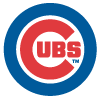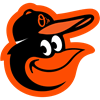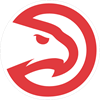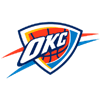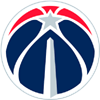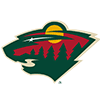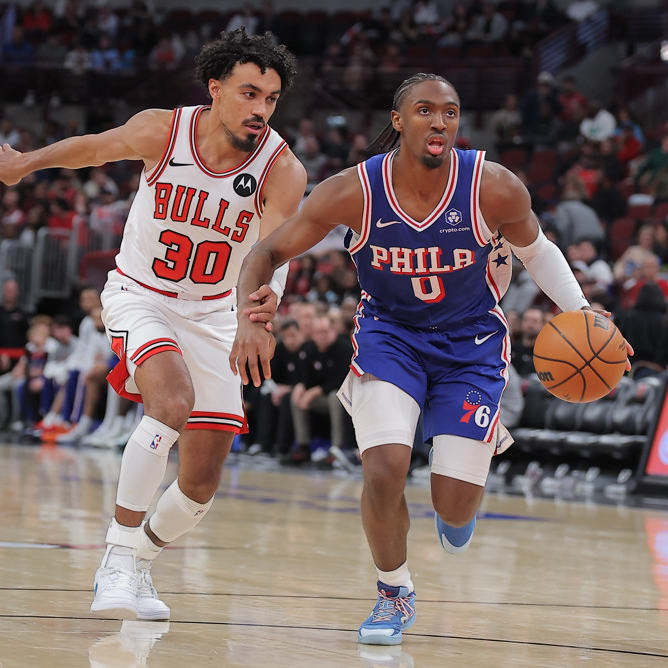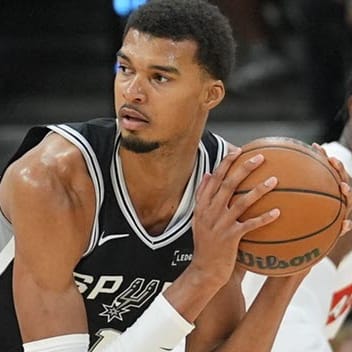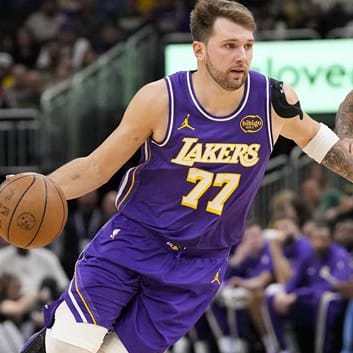 STATE OF THE FRANCHISE
STATE OF THE FRANCHISE
The rebuilding job continues in Boston. General manager Danny Ainge continues to collect assets to eventually make a big deal. Will Rajon Rondo be part of that upcoming deal? Who knows, but we'll be stuck listening to that rumored possibility now through the trade deadline. In the meantime, coach Brad Stevens has to juggle a surplus of developing players within a limited amount of available playing time. Does he give high-ceiling Evan Turner lots of minutes to prove his worth? Or does Turner sit so that Marcus Smart can develop at shooting guard? That's just one of the many issues facing the Celtics this year.
PLAYING TIME DISTRIBUTION
Rajon Rondo is the unquestioned leader at point guard, but will he be around after the trade deadline? We may see two very different starting lineups before and after the February deadline. Pre-deadline, expect Rondo to run the floor with Avery Bradley starting at shooting guard, Jeff Green at small forward, and a mix of Brandon Bass, Jared Sullinger, Kelly Olynyk, and Tyler Zeller at power forward and center.
Post-deadline, the Celtics could likely be without Rondo, Bass, and maybe Jeff Green. That would mean Marcus Smart moves to point guard instead of splitting time with Bradley at shooting guard. Bradley and his new four-year deal stays put at shooting guard. Turner would get most of the minutes at small forward. Bass' departure would free up time for all the other young Celtic bigs, but you have to think Ainge would love to flip some combination of Olynyk, Sullinger, and Zeller into one top-quality big.
That means, come late January, scavenge the Celtics roster for cheap free agent pick-ups before they suddenly get a big boost in playing time.
PLAYER OUTLOOKS
Centers
Kelly Olynyk: Olynyk generated buzz entering his rookie season after wowing the onlookers at the 2013 Orlando Summer League, but summer-league performances are not a guarantee of future performance. The 7-foot power forward went on to have an up-and-down season, which included an early-season ankle injury. In 70 games, he averaged 8.7 points on 47-percent shooting, 5.2 rebounds, 1.6 assists, 0.5 steals, and 0.4 blocks in 20 minutes per game last season. Olynyk hinted at the polished offensive game that was his reputation coming out of Gonzaga, but he's a work-in-progress defensively. Forced to see a lot of action at center, NBA bigs attacked him in the post, and he was susceptible in pick-and-roll defense. That's largely due to his conditioning, something Olynyk has been working on between years one and two in the Association. Auguring well for the big man is the improvement he showed over the second half of the season that culminated in an impressive three-game stretch (25.7 ppg, 9.4 rpg, 3.7 apg) to finish the season. He'll get the minutes he needs to develop, expanding offensively and improving defensively, but the addition of Tyler Zeller will limit the available minutes at center. And there's a crowd at the four, along with Brandon Bass and Jared Sullinger. That's a problem coach Brad Stevens will need to address, but Olynyk is in line for an increased role this season.
Tyler Zeller: After the Celtics flirted with trading for Kevin Love in the offseason, Zeller's acquisition is what could be called an underwhelming consolation prize. But the former Cavalier gives Boston much-needed size at center and is positioned to be their non-draft acquisition with the most impact. The Celtics were starving for a center last season, often using Jared Sullinger or Kelly Olynyk out of position. In Zeller, the 17th overall pick in the 2012 draft, they get a big who can run the floor, shoot, and defend the rim. The Cavs weren't looking to get rid of him until it became clear they needed the space to sign LeBron James. In 70 games for Cleveland last season, Zeller averaged 5.7 points, 4.0 rebounds, and 0.5 blocks in 15 minutes per game. He's a serviceable young player that wouldn't start for every team but will have the opportunity to compete for the top spot in Boston. Though he's a bit raw, the Celtics can afford to give him the space needed to develop, even as a backup to Sullinger.
Vitor Faverani: On a team that lacked a center, the 6-11, 260-pound Faverani offered good size and became the opening-night starter. And who can forget that opening night when he scored 12 points, grabbed 18 rebounds, and blocked six shots. He was the first heavy-bid free agent in many fantasy leagues following that game. Alas, Faverani's play and production slipped as the NBA adjusted to the newcomer from the Spanish league, and he became a regular on the D-League shuttle between Boston and Maine. It was on one his stints with the D-League Red Claws that Faverani suffered a tear in his meniscus that cut short his season. In 37 games for Boston, Faverani averaged 4.4 points, 3.5 rebounds, 0.4 assists, 0.4 steals, and 0.7 blocks in 13 minutes per game. It's too bad he had the injury. Head coach Brad Stevens may have given Faverani more minutes when it became clear the Celtics' season was heading south. The Celtics could still use him as a rim protector, but they've added Tyler Zeller, who is set to challenge for the starting spot. Faverani has another two years at a reasonable rate and should slot in as the backup center if his knee is healthy.
Joel Anthony: After playing his first six seasons and winning two championship rings for Miami, Anthony was traded in the middle of his seventh season from the Heat to the Celtics. His status didn't change much with the move in geography. Since the 2011-12 season when he started 51 games and averaged 21 minutes, Anthony had not been a consistent member of the Heat's rotation. In 21 games with Boston last season, Anthony averaged 1.0 points, 1.5 rebounds, 0.1 assists, 0.1 steals, and 0.4 blocks in seven minutes per game. There's nothing to like about him offensively, but he's a rim protector who plays with great effort on the defensive end. Boston was bereft of a legitimate NBA center last season and are looking for one of several bodies to emerge in 2014-15. But it's unlikely they'll waste minutes on Anthony when the playing time can be used developmentally for Tyler Zeller, Jared Sullinger, or Kelly Olynyk. Anthony is in the final year of his contract, and the Celtics could use him as a trade asset later in the season.
Forwards
Jared Sullinger: Sullinger bounced back in 2013-14 after his rookie season was cut short by back surgery. He played 74 games (44 starts) while becoming a bigger part of the Celtics' offense and a consistent producer. Sullinger averaged 13.3 points on 43-percent shooting with 8.1 rebounds, 1.6 assists, 0.5 steals, and 0.7 blocks in 28 minutes per game. Much of Boston's season was about experimentation, and that included having Sullinger take his game out to three-point range with spotty results. After taking just five three-pointers during his rookie season, Sullinger hoisted 208 long balls last season, successful on just 27 percent. If they view him as a stretch four/five, making him a more difficult matchup for some NBA bigs, there's still some work to be done in that area. Many of Sullinger's minutes came at the center position, where the 6-9 forward held up well and was one of the leading offensive rebounders in the league. With the addition of Tyler Zeller, we'll see more of Sullinger at power forward, a position of depth on the roster. How coach Brad Stevens divvies up the minutes amongst Sullinger, Kelly Olynyk, and Brandon Bass is something to watch in preseason games. Sullinger will continue to polish his offensive game, but his biggest need is to get better conditioned. The Celtics would like to see Sullinger stay on the court for longer stretches and more than 28 minutes per game.
Jeff Green: Green entered the 2013-14 season as "the man" in Boston. After finishing off the previous season with two strong months, Green was set to lead the Celtics without the departed Kevin Garnett, Paul Pierce, and the injured Rajon Rondo. Green didn't fare well as opponents' primary target. He finished with a career-high 16.9 points per game, but his shooting percentage took a hit (41 percent overall, 34 percent three-pointers), while he hoisted a career-high 14.3 shots per game. If he's not going to be a pure scorer, Green needs to do other things, but that doesn't seem like it's in his wheelhouse. He averaged 4.6 rebounds, 1.7 assists, 0.7 steals, and 0.6 blocks in 34 minutes per game. It's become apparent that Green is more of complementary piece, which is frustrating because he's capable of more. Some of his disappointing play had to do with having a roster full of new faces and the experimentation that came along with it, but he's getting paid to produce more – and more consistently. A full season with Rondo might help, but entering his walk year, Rondo's not a guarantee to survive the entire season with Boston. And Green might not be long for the city. He's got two years left on his deal ($9.2 million per season), but the Celtics might listen if a contender comes calling. They've added a couple of bodies – free agent Evan Turner and draft pick James Young – that can play the small forward spot. Green will open the season as the starting three and should once again be among the team's leaders in shots.
Evan Turner: Turner split time between Indiana and Philadelphia, the team that drafted him second overall in 2010. The Sixers were holding out for more but eventually accepted the realities of the market and received a second-round draft pick and an expiring contract (Danny Granger's) that they bought out. Turner's playing time and reputation took a tumble with the Pacers, who for several reasons, did not extend a qualifying offer and let Turner become an unrestricted free agent. He signed a one-year deal with Boston for a portion of their mid-level exception. The storylines are that Turner is motivated to rehab his career; he's a low-risk/high-reward signing for Boston; and head coach Brad Stevens will have a positive impact (think Jordan Crawford in Boston last season). Turner has flaws, but he's a multi-category producer that averaged 17.4 points, 6.0 rebounds, 3.7 assists, and 1.0 steals in 35 minutes per game over 54 games with the Sixers last season. He's a ball-dominating wing player, who doesn't shoot well from the perimeter and can be distracted when not engaged. Now he joins a team that's looking to develop a few young wings/guards while already possessing a dominant ball-handler in Rajon Rondo. Turner will need to modify his game on a team that's still very much experimenting with combinations. The heady numbers Turner had with Philly are unlikely to be rediscovered, but there will be an opportunity for him in Boston. If he plays well early in the season in a limited role, that could prompt Boston to trade Jeff Green and create a larger load for Turner.
Brandon Bass: From beginning to end, Bass was the Celtics' most consistent performer last season. It was surprising that he stayed on the roster all season as his name was frequently floated in trade rumors. He played 82 games and started a career-high 73. The nine-year veteran averaged 11.1 points on 49-percent shooting with 5.7 rebounds, 1.1 assists, 0.4 steals, and 0.9 blocks in 28 minutes per game. The fact that he carved out such a big niche for himself was somewhat remarkable, considering the team was in rebuild mode from Game 1 and were looking to get minutes for young power forwards Jared Sullinger and Kelly Olynyk. Because Boston lacked a true center, circumstances worked out so that Bass could play the four while the Sullinger/Olynyk tandem saw minutes at the five. The addition of Tyler Zeller, who could emerge as the starting center, means the power forward minutes will be scarce. Bass is heading into the final year of a deal that pays him $6.9 million this year, a price tag Boston may not want to hand out to a depth power forward. The trade rumors from last season could lead to an actual deal this year. There should be a few teams looking for a consistent producer with a good work ethic. As an undersized power forward, Bass won't get big rebounding numbers, but he's staggeringly consistent, is a proficient mid-range jump shooter, and has made himself into a pretty good free-throw shooter.
Gerald Wallace: Wallace appeared to be an odd fit when the rebuilding Celtics acquired him prior to last season. They were certainly motivated by the first-round draft picks that came along with Wallace's contract (three years, $10.1 million per), but what his exact role would be was unclear. For Boston, Wallace eventually became the veteran helper, who deferred to his younger teammates on the court. He took just four shots per game, preferring to move the ball offensively before his season was cut short by ankle and knee surgeries. In 58 games, he averaged 5.1 points, 3.7 rebounds, 2.5 assists, 1.3 steals, and 0.2 blocks in 24 minutes per game. Those numbers are well off the levels Wallace achieved earlier in his career. Thirteen NBA seasons have clearly reduced his athleticism and his efficiency. The health of his knee and ankle are the prime factors when speculating on a role for the upcoming season. The repairs may allow him to do more on the court. However, with Boston heading into the second year of a rebuild with an influx of younger players, Wallace should get fewer minutes in 2014-15.
James Young: Young is viewed as a scoring wing, though he needs to work on shot selection and three-point range. He was mostly a jump shooter at Kentucky, averaging 14.3 points on 41-percent shooting overall and 35 percent from beyond the three-point line. Only 19-years-old, he's young enough to develop those skills as well as others to become a capable perimeter scorer. He has the size (6-7) and wingspan to defend both shooting guards and small forwards while being a good rebounder for his spot. However, Young still has work to do on the defensive end of the floor. We didn't see him at all in summer league due to a neck injury he sustained in an automobile accident prior to June's draft. The organization doesn't feel the injury is serious, but they felt no need to push the rookie. Young enters a good situation in Boston, a team that doesn't need him to be an immediate contributor. He can simmer while backing up Jeff Green at the three and Avery Bradley at the two. If he develops quickly, it will allow the Celtics to shop Green. Young can be one of the next wave of three-and-D guys.
Chris Johnson: Johnson was a nice mid-season addition to the roster from the D-League and infused the Celtics with high energy and some three-point proficiency (40 percent in first 17 games) immediately after joining Boston. His initial contributions led to a fairly consistent role in the rotation, and Johnson earned himself a second 10-day contract before signing a team-friendly, non-guaranteed deal. In 40 games, he averaged 6.3 points, 2.4 rebounds, 0.8 assists, 0.7 steals, and 0.1 blocks in 20 minutes per game. However, he was unable to sustain his shooting and dropped off pretty badly over the final month of the season, making just 33 percent overall and 21 percent from three-point range in the final 14 games. The non-guaranteed nature of his contract, which runs another three years, makes Johnson expendable. That's significant, because the Celtics have 18 players under contract entering training camp. The team also added some small forwards in the offseason, so playing time on the wing will be scarce. Johnson will have to make himself indispensable during the preseason in order to earn a roster spot.
Chris Babb: Babb was a final cut in the 2013 training camp and spent much of last season with the Maine Red Claws, the Celtics' affiliate in the D-League. He was eventually signed to Boston when Gerald Wallace was lost for the season. Babb is a high-energy shooting guard, who didn't shoot very well. In 14 games for the Celtics, Babb averaged 1.6 points on 27-percent shooting (22 percent beyond the arc) with 1.2 rebounds, 0.2 assists, and 0.4 steals in nine minutes per game. After two 10-day contracts, he signed a contract in March for the remainder of the season, plus another three non-guaranteed years. Boston's offseason acquisition of Marcus Thornton adds to an already over-populated wing/backcourt, a move that likely seals Babb's fate for 2014-15. He'll start training camp with the team, but the Celtics already have 15 roster spots devoted to guaranteed contracts. Babb is unlikely to be on the roster to open the season. If he does survive training camp to earn a roster spot, he'll be nothing more than an end-of-the-bench player.
Guards
Rajon Rondo: Rondo got a late start to the season in 2013-14 after his recovery from knee surgery. Missing about a year of competitive basketball led to some rust in the point guard's game last season, and he never played on the second night of back-to-back sets. By the end of the season, he was getting regular minutes (37 minutes in March/April) while averaging double-digit assists (11.5 apg). As a whole, Rondo averaged 11.7 points on 40-percent shooting with 5.5 rebounds, 9.8 assists, and 1.3 steals in 30 games. There were nights when the vintage Rondo was on display but others when it looked like he was still fighting through rust. Aside from the health of his knee, the biggest question surrounding Rondo is whether he'll be with Boston all season. Speculation started about two minutes after Boston selected Marcus Smart with its first round pick in June. Rondo is in the final year of his contract and is expected to test the free-agent market next summer. The Celtics' front office insists they want to rebuild around him going forward, but does Rondo want to stay in Boston to rebuild? Or will the front office be tempted to move him? Offers will come in, and general manager Danny Ainge, who's not afraid of bold moves, will listen. But the city Rondo's calling home will not matter. He'll be any team's starting point guard. Entering 2014-15, Rondo remains a top playmaker with excellent vision, a good rebounder from the guard position, and a gambler on defense who will average more than a steal per game.
Avery Bradley: Bradley battled through injuries for a second consecutive season, playing 60 games last season following a 2012-13 season when he played just 50 games. He plays hard, so it's fair at this point to wonder about his style of play leading to future injuries. The Celtics, however, are less concerned, as they signed Bradley to a four-year, $32 million deal. Known for his elite on-ball defense – head coach Brad Stevens feels Bradley will be integral to the defensive posture he wants his team to establish – the shooting guard showed an expanded offensive game in 2013-14, taking nearly 14 shots per game. He averaged a career-high 14.9 points on 44-percent shooting (40 percent beyond the arc) with 3.8 rebounds, 1.4 assists, 1.1 steals, and 0.2 blocks in 31 minutes per game. If he maintains his offense and continues to play good defense, the price tag won't be a hindrance. Whether or not he continues on an upward trajectory offensively is the real question. While his offense improved, Bradley is not what you'd call a weapon with the ball in his hands. He's not adept at setting up others, nor does he drive often. Many of his near-the-rim touches are the result of baseline cuts where he finishes on a dump-off pass. He'll be Boston's starting shooting guard, and it'll be interesting to see if he can diversify his offensive repertoire.
Marcus Thornton: Thornton joins the Celtics after splitting last season between Sacramento and Brooklyn. He brought the Nets a little scoring punch off the bench, averaging 12.3 points on 41-percent shooting in 24 minutes per game. That included a career-high 38 percent from three-point range in his 26-game stint in Brooklyn, though his playing time and shooting percentages dropped in the postseason. For Boston, Thornton's biggest value is as an expiring contract. He's a shot-taker who can do for Boston what he did for Brooklyn, but it would be counter-productive for the rebuilding organization to waste minutes on Thornton when minutes could be used for their draft picks, James Young and Marcus Smart. Thornton could get early minutes to prop up trade value and create a market, but long term, the Celtics are unlikely to give much thought about Thornton.
Marcus Smart: Smart is viewed as a combo guard with a primary focus as a point guard. If the Celtics drafted him to be a shooting guard, he'll need to improve in one significant area – his shooting. The sixth-overall pick in the draft shot just 29 percent during the summer league. While he managed to make 42 percent of his shots at Oklahoma State, much of that was due to Smart's ability to get to the rim. He made just 28 percent of his jump shots in the half-court offense. Smart is well-built and uses his body to create opportunities for himself, particularly on the drive. He averaged more than eight free-throw attempts per game for the Cowboys last season. Smart's also considered one of the top perimeter defenders coming out of college this year, a trait that pleases coach Brad Stevens. The coach has talked about establishing a "defensive DNA" for his team, and Smart fits that profile. He now joins a Celtics team that's got an elite point guard in Rajon Rondo and just signed its shooting guard, Avery Bradley, to a four-year contract. Initially, it looks like Smart will back up both guard spots. However, there's potential for an increased role later in the season, particularly if Boston trades Rondo, who is in the final year of his contract before hitting unrestricted free agency.
Phil Pressey: Pressey earned a roster spot, and a multi-year contract, coming out of the 2013 summer league and provided some ball-handling insurance when the Celtics began the season without point guard Rajon Rondo. Despite the need for handlers, Pressey was an end-of-the-bench guy early on and never really mattered until Boston traded Jordan Crawford in January. Pressey proved to be capable at running an offense and ended up playing 75 games (11 starts). He averaged 2.8 points, 1.4 rebounds, 3.2 assists, 0.9 steals, and 0.1 blocks in 15 minutes per game. The obvious flaw in his game is shooting. Though he improved over the course of the season, Pressey made just 31 percent of his attempts and followed that up with a 32-percent accuracy rate in the most recent summer league. Teams will lay off him, putting pressure on him to hit jumpers more consistently. Pressey has guaranteed money this season, but the addition of Marcus Smart negatively impacts his playing time, not to mention the impact a healthy Rondo will have on Pressey's minutes.
SLEEPER
Marcus Smart: Smart is really a second-half sleeper. If Boston trades Rondo at the deadline, huge minutes should open up for the Oklahoma State product. But do you have room on your bench to store him for three months? If so, and you can stand the typical rookie low field goal percentage, he's a sneaky pick.
BUST
Gerald Wallace: I said it last year, and I'll say it again this year: The constant diving for balls and hustling on the fast break have caught up with him. The Celtics are stuck with him and the two years/$20 million dollars remaining on his contract, but you should stay far away!









